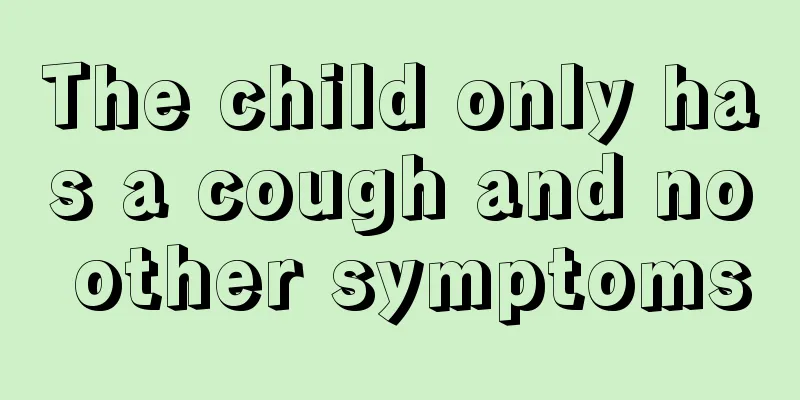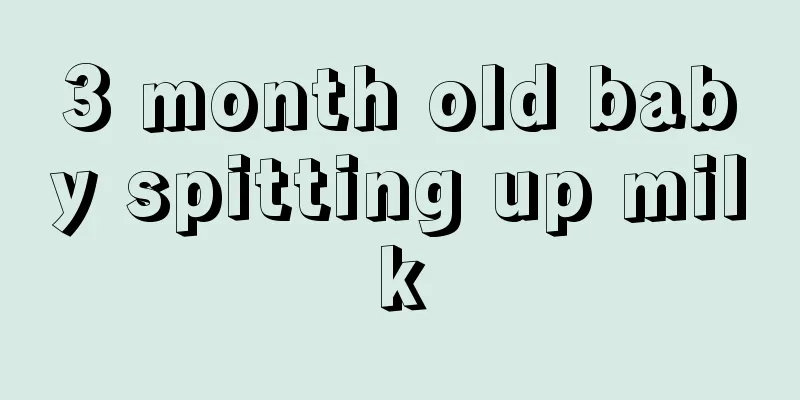What is the appropriate water temperature for a newborn baby's bath?

|
We all know that caring for a newborn requires special care from parents to make the baby more comfortable and grow healthily. However, bathing the baby is also essential. Regularly bathing the baby can make the baby's skin cleaner and more comfortable. However, since the skin of a newborn is relatively delicate, the water temperature must be controlled when bathing the baby to ensure that the baby will not be scalded or frozen by the water. So let's take a look at the appropriate water temperature for bathing a newborn. What is the appropriate water temperature for a newborn baby's bath? Newborn babies can be bathed, but you must pay attention to some techniques when bathing them. Before bathing, clean clothes and diapers should be prepared. The room temperature should be controlled at 24℃ ~ 26℃, and the water temperature should be close to the body temperature of the newborn or around 37.5℃. The bathing time for the baby should not be too long. If the baby is soaked in water for a long time, especially the baby with dry skin, the skin will easily become dehydrated and the dryness of the skin will be aggravated. At the same time, soaking for too long will cause the outermost stratum corneum of the skin to absorb water and soften, reducing the skin's resistance. Even if your baby loves playing in the water, it is best not to let him stay in the bath for more than 10 minutes. Replenish water in time after bathing: After the baby finishes taking a bath, it is best to give the baby about 50 ml of water 5 to 10 minutes later. For the baby, bathing is a "big exercise" and water must be replenished in time. In short, bathing a baby requires skills, keeping the baby's body clean, and paying attention to the baby's physical condition. The water temperature is very important. How to bathe a newborn baby After completing the preparations for bathing the newborn, it is time to start the formal bathing. Bathing is mainly divided into washing the head, washing the face and washing the body. Let’s see how to bathe a newborn baby. 1. Wash your hair and face Just like us adults, when bathing a baby, we should wash the baby's head and face first. After taking off the baby's clothes, do not put them aside, but wrap them around the baby's chest and abdomen to keep them warm. Then you can start washing the face, head and neck. Hold the baby's buttocks with your left elbow and waist, support the baby's head with your left palm and left arm, and wash slowly with your right hand. Use a small towel dipped in water to gently wipe your face. Pay attention to your ears and wrap the towel with your fingers to gently wipe the auricle and the back of the ear. Do not let water get in. Washing hair is also a big project. You should use baby-specific shampoo, pour an appropriate amount on your hands, and then gently rub the baby's head. Do not touch the baby's scalp with your fingernails. Before washing your baby's hair, you can apply some baby oil on your baby's head to soften the dandruff and make it easier to clean. After washing, rinse off the shampoo with clean water. 2. Wash your body If the newborn's umbilical cord has not fallen off yet, you should wash the upper and lower body separately when bathing. Do not get the umbilical cord wet, as this will cause inflammation. Wash the upper body first, using the same posture as washing the head, and wash the newborn's neck, armpits, chest, back, arms and hands in turn. Then wash the lower body, place the baby's head against the left elbow, hold the newborn's left thigh with your left hand, and wash the newborn's genitals, buttocks, thighs, calves and feet in turn. It is because of the presence of children that the whole family is filled with warmth and happiness, and many parents enjoy taking care of their babies. The above is an introduction to the appropriate water temperature for bathing newborns. After understanding it, we must control the water temperature when bathing the baby, so as to effectively avoid symptoms such as burns in the baby. |
<<: What to do if the newborn's brain is underdeveloped
>>: What is the cause of the 2-year-old baby's nose bleeding?
Recommend
Introduction to Spring Diet Tips for Young Children
We cannot ignore the dietary health care of young...
What are the developmental standards for babies at 14 months?
For every parent, they are particularly concerned...
Prevention of influenza in children
Autumn and winter are the seasons when influenza ...
What causes a girl's stomach ache?
As we all know, children are more lively and acti...
What should I do if my baby does not sweat after taking antipyretics?
Generally speaking, after a baby has a fever and ...
Why is the child born with a hoarse voice?
No matter how youthful and good-looking a person ...
What are the symptoms of spleen and stomach disharmony in children?
After a child is born, until the age of three, hi...
What to do if your three-year-old baby has toothache
Toothache is very common. When you have toothache...
The reason why the baby's lower teeth cover the upper teeth
Many parents will find that the newly grown tooth...
Why does the child spit blood?
Children's physical condition is often prone ...
Is it good to use air conditioning for a two-month-old baby?
Is it good to use air conditioning for a two-mont...
What food should I eat to remedy a child’s slow growth?
Parents are the most anxious when their children ...
Reasons why the tip of the baby's tongue is red
The red tip of the baby's tongue may be cause...
What are the dietary treatments for dry cough in children?
Babies are more likely to catch colds in autumn a...
Reasons for red spots in baby's eyes
In fact, in daily life, many parents do not know ...









